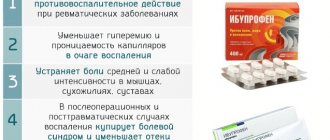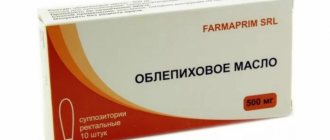Pharmacological properties of the drug Trichopolum
Pharmacodynamics . Metronidazole is a 5-nitroimidazole derivative that has antiprotozoal and antibacterial effects. Mechanism of action . Metronidazole easily penetrates into single-celled organisms, protozoa and bacteria and does not penetrate mammalian cells. The redox potential of metronidazole is lower than that of feredoxin, an electron transport protein. This protein is found in anaerobic and aerobic microorganisms. The potential difference reduces the nitro group of metronidazole. The reduced form of metronidazole is capable of damaging the DNA chain of these organisms. Metronidazole is active against Trichomonas vaginalis, Giardia lamblia, Entamoeba histolytica and Balantidium coli . It also has a strong bactericidal effect against the following anaerobic bacteria: gram-negative bacilli: Bacteroides species , including the Bacteroides fragilis group (B. fragilis, B. distasonis, B. ovatus, B. thetaiotaomicron, B. vulgatus), Fusobacterium species; gram-positive rods: Eubacterium, Clostridium; gram-positive cocci: Peptococcus species, Peptostreptococcus species. Metronidazole does not have a bactericidal effect against most aerobic and partially anaerobic bacteria, fungi and viruses. Pharmacokinetics . Suction . Metronidazole is easily absorbed from the gastrointestinal tract (minimum 80%). After vaginal administration, a small amount is absorbed. After administration of the drug at a dose of 250, 500 mg or 2 g by healthy volunteers, its maximum concentration in blood plasma over 1–3 hours was 4.6–6.5 μg/mol, 11.5–13 μg/mol and 30–45 µg/mol, respectively. Simultaneous ingestion of food reduces the rate of absorption and the maximum concentration of metronidazole in the blood plasma. About 20% of metronidazole is bound to plasma proteins. Distribution . Metronidazole is distributed in many tissues and body fluids, including bile, bone tissue, saliva, peritoneal fluid, vaginal secretions, seminal fluid, CSF, brain tissue and liver. Penetrates the placental barrier and is detected in breast milk in a concentration that is practically no different from that in blood plasma. The half-life of metronidazole in adults without liver and kidney dysfunction is 6–8 hours. In case of liver dysfunction, the half-life of metronidazole may increase. Biotransformation . On average, 30–60% of metronidazole taken orally is metabolized in the liver by hydroxylation, oxidation and conjugation with glucuronic acid. The main metabolite, 2-hydroxymetronidazole, also has antibacterial and antiprotozoal effects. Removal . Metronidazole and its metabolites are excreted mainly in the urine (60–80%); Only 6–15% of the administered dose is excreted in feces. The renal clearance of the drug is 70–100 ml/min. Urine may be dark or acquire a red-brown color due to the presence of water-soluble dyes, which are products of the biotransformation of the drug. A few studies show that renal excretion of metronidazole is reduced in elderly patients. Metronidazole is eliminated from the body by hemodialysis, while peritoneal dialysis is ineffective.
Description
Trichopolum belongs to the group of antimicrobial drugs that are highly effective. The main component of this medication is metronidazole. The drug is available in the following forms:
- in tablets;
- in the form of a solution for infusion into the blood through a vein;
- in the form of vaginal tablets.
Trichopolum tablets contain 250 mg of the chemical, as well as additives such as magnesium, molasses, stearate, starch and gelatin. The finished drug is packaged in standard packages of 20 tablets each.
The solution contains the following components:
- metronidazole;
- water;
- sodium chloride;
- sodium hydrogen phosphate;
- citric acid monohydrate.
Additional information: Pharmacies sell ampoules with a dosage of 20 ml and bottles of 100 ml.
Special vaginal tablets trichopolum , in addition to the main chemical component (metronidazole - 500 mg), contain silicon dioxide, cellulose, povidone and stearic acid. Standard packaging – 5 or 10 pieces in standard packaging.
After metronidazole enters the body, the chemical penetrates the cell of the parasitic microorganism and destroys it. Its effectiveness has been repeatedly tested in the fight against anaerobic protozoa, as well as lamblia, trichomonas and gardnerella. The drug Trichopolum can be stored for up to 3 years at temperatures not exceeding 25 C.
Use of the drug Trichopolum
Prevention of infections caused by anaerobic bacteria: adults and children over 12 years of age - at the beginning of treatment, 1-1.5 g per dose, then 1 tablet (250 mg) 3 times a day during or after meals until the period of immediate preparing the patient for surgery. Infections caused by anaerobic bacteria: adults and children over 12 years of age - 1-2 tablets of 250 mg 3 times a day during or after meals; children aged 6–12 years - 375 mg per day in 3 divided doses during or after meals. Metronidazole is used as monotherapy or in combination with other antibacterial agents. As a rule, the course of treatment does not exceed 7 days. Trichomoniasis: treat both sexual partners. Women: 1 tablet 2 times a day and 1 vaginal suppository (500 mg) per day for 10 days. Men: as a rule, 1 tablet 2 times a day in the morning and evening with meals for 10 days or 750 mg in the morning and 1250 mg in the evening for 2 days. 2 g of metronidazole is also used once. Bacterial vaginitis: adults - 500 mg (2 tablets of 250 mg) morning and evening for 7 days or 2 g of metronidazole once a day. Amebiasis: adults - 1.5 g per day in 3 divided doses for 7 days; children weighing 20 kg - 30–40 mg/kg per day in 3 divided doses for 7 days. Helicobacter pylori eradication: metronidazole is used for at least 7 days in combination with other drugs for the eradication of Helicobacter pylori ; adults - 500 mg (2 tablets of 250 mg) per day in 2-3 doses for 7-14 days. There are no special instructions for use in children. Patients with liver failure . Metronidazole is metabolized primarily by oxidation in the liver. In patients with severe hepatic impairment, metronidazole is metabolized slowly, which may lead to accumulation of metronidazole and its metabolites in the body. The drug can accumulate in significant quantities in patients with hepatic encephalopathy, and high plasma concentrations of metronidazole can cause encephalopathy. The daily dose taken in 1 dose is reduced to 1/3. Patients with renal failure . In renal failure, the half-life of metronidazole does not change, so dose reduction is not necessary. In patients undergoing hemodialysis, metronidazole and its metabolites are eliminated within 8 hours. Immediately after dialysis, metronidazole should be repeated. In patients on fractionated peritoneal dialysis or continuous dialysis, no dose adjustment is necessary. Elderly patients . The drug is used with caution, especially in high doses. When using the drug in children, the tablets can be crushed. The drug can be used regardless of meals.
Prescribed for men
Trichopolum for men is prescribed in the following cases:
- For alcohol addiction.
- If they are diagnosed with dangerous diseases such as pancreatitis, urethritis, gonorrhea or alantidiasis.
- For stomach ulcers and prostatitis of any type.
Before treating trichomoniasis, the diagnosis of the disease must be confirmed by taking and examining a smear.
Trichopolum for women
Side effects of the drug Trichopolum
From the gastrointestinal tract: mild disorders - epigastric pain, nausea, vomiting, diarrhea; stomatitis with a feeling of dry mouth, metallic taste in the mouth, anorexia; isolated cases of reversible pancreatitis after completion of treatment. From the blood and lymphatic system: in isolated cases - agranulocytosis, neutropenia and thrombocytopenia. From the nervous system: headache, sensory peripheral neuropathy, convulsions, dizziness, ataxia; very rarely - manifestations of encelophalopathy (confusion) and subacute cerebellar syndrome (ataxia, dysarthria, gait disturbance, nystagmus, tremor), which may disappear after stopping the drug. From the organ of vision: transient diplopia, myopia. Mental disorders: confusion, hallucinations. From the hepatobiliary system: in isolated cases - a reversible change in functional liver tests; cholestatic hepatitis. From the skin and subcutaneous tissue: prolonged hyperemia, itching of the skin, rashes (in some cases - pustular rash); sometimes - febrile manifestations; urticaria, angioedema, in exceptional cases - anaphylactic shock. Others: During treatment, urine may become red-brown in color, which is due to the presence of water-soluble pigments that are a product of metronidazole metabolism.
Contraindications and side effects
Trichopolum tablets are strictly forbidden to be used to treat children under 3 years of age, as well as pregnant women. It is recommended to stop breastfeeding a child while taking the medication for the duration of treatment. Contraindications for use are:
- Severe liver and kidney diseases.
- Epilepsy in all manifestations and forms.
- Nervous system disorders.
- Leukopenia and allergic reactions.
During the course of treatment with Trichopolum, side effects affecting some of the patient’s organs cannot be ruled out. Deviations are accompanied by disturbances in the functioning of the esophagus (a bitter taste appears in the mouth), as well as severe headaches, blurred vision, impaired coordination and dizziness.
In some cases, there is a decrease in the content of platelets and red blood cells in the blood, as well as local reactions, manifested in severe itching, burning and increased urination. To avoid side effects during treatment, you must completely abstain from alcohol in any form and sexual intercourse.
Special instructions for the use of the drug Trichopolum
Metronidazole is used with caution in diseases of the central nervous system. If neurological disorders develop during drug therapy (numbness, paresthesia or convulsions), use of the drug is possible only if the benefit of treatment outweighs the possible risk of complications. The drug is used with caution in severe liver failure and hepatic encephalopathy. Metronidazole should be used with caution in patients treated with corticosteroids and prone to edema. Patients who have developed hemogram changes before and after treatment with metronidazole should be under medical supervision if repeated use of metronidazole is necessary. When using the drug for 10 days, it is necessary to monitor hemogram parameters. After using metronidazole, candidiasis of the oral mucosa, vagina and gastrointestinal tract may develop, requiring appropriate treatment. During treatment with metronidazole and at least 1 day after the end of therapy, you should not drink alcohol due to the increased risk of adverse reactions. Metronidazole may change some laboratory parameters (ALAT, AST, LDH, TG, glucose). During pregnancy and breastfeeding . Controlled studies of the use of metronidazole during pregnancy have not been conducted. Metronidazole penetrates the placental barrier. Metronidazole is contraindicated in the first trimester of pregnancy. In the second and third trimester of pregnancy, the drug should be used only if the potential benefit of its use outweighs the possible risk of undesirable effects on the fetus. Metronidazole passes into breast milk. The drug should not be used during breastfeeding. If therapy is necessary, breastfeeding should be stopped. Children . The drug in the form of 250 mg tablets can be used in children over 6 years of age. The ability to influence reaction speed when driving vehicles or working with machinery . You should also take into account the possible occurrence of confusion, dizziness, hallucinations, convulsions while taking the drug and refrain from driving or operating machinery during treatment with metronidazole.
Analogues and cost of Trichopolum
In the absence of Trichopolum, it can be replaced with drugs of similar composition, such as, for example, Efloran, Flagyl, Gravagin, Metrogyl and Metronidazole.
The price of Trichopolum varies depending on the form in which it is produced. Tablets will cost the user at least 85 rubles, and vaginal suppositories - from 333 rubles.
Please note: Trichopolum is usually not sold in solution.
In conclusion, we note that the drug in question has a wide range of action, relatively low price and proven effectiveness. However, when taking it, side effects are possible, manifested in a bitter taste in the mouth and mild intestinal disturbances. In any case, you must first consult with a therapist.
Interactions of the drug Trichopolum
Metronidazole can potentiate the effect of indirect anticoagulants (coumarin derivatives) and prolong prothrombin time, so the doses of these drugs should be adjusted accordingly. Inducers of microsomal liver enzymes (phenytoin, phenobarbital, etc.) accelerate the metabolism of metronidazole, which leads to a decrease in its concentration in the blood plasma; microsomal enzyme inhibitors (in particular cimetidine) may prolong the half-life of metronidazole. Metronidazole increases the concentration of lithium in the blood plasma and enhances its toxic effect. If simultaneous use of lithium preparations is necessary, the level of lithium as well as creatinine in the blood plasma should be monitored during treatment. Metronidazole can interact with terfenadine and astemizole, causing undesirable symptoms from the cardiovascular system ( QT on the ECG, arrhythmia, etc.). Drinking alcohol during treatment with metronidazole can cause the development of disulfiram-like reactions (feeling hot, sweating, headache, nausea, vomiting, pain in the epigastric region, etc.). Metronidazole can increase the toxic effects of disulfiram (disorientation, acute psychosis), so treatment with metronidazole can be prescribed only 2 weeks after stopping disulfiram. Drug interactions have been noted when using metronidazole with bisulfan. Metronidazole is an inhibitor of cytochrome P450 3A4 (CYP 3A4) and therefore can slow down the biotransformation of drugs metabolized by this enzyme. Metronidazole reduces the clearance of fluorouracil and, therefore, can increase its toxicity.






